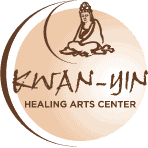by Michelle Winchell ND LAc
Strokes, or cerebrovascular accidents (CVAs), are basically heart attacks that occur in our brain causing tissue damage due to decreased blood flow. There are two basic types of stroke – ischemic and hemorrhagic. Ischemic strokes happen when an artery in the brain gets clogged or closes off, while hemorrhagic strokes happen when an artery in the brain starts bleeding. Both types can be fatal, so it is vital to know how to identify if you, or someone you love, is experiencing one. The pneumonic “F.A.S.T.” is used to remind us to examine the Face, Arm, and Speech while Time is of the essence.
When observing the face, look for asymmetry or droopiness on one side. Do their facial expressions look odd? Pay attention to the arms – ask if there is any weakness or numbness. If they try to hold both arms out, does one arm drift downward? Listen carefully to their speech. Do they seem to be having trouble speaking or do their words sound strange? If you notice any of these signs, call for an ambulance – the sooner treatment begins, the better the chances of making a full recovery.
As a naturopathic physician and licensed acupuncturist, I tailor all of my treatment approaches to the individual I am working with by using the best and most appropriate therapies I have to offer. General guidelines for treating patients recovering from an ischemic stroke focus on breaking up blood clots and opening clogged arteries. Treatment should also target the prevention of new blood clots by addressing platelet aggregation and blood viscosity or thickness. General guidelines for treating those recovering from a hemorrhagic stroke should focus on reducing the damage caused by bleeding around the brain, stop or decrease medications/supplements that thin the blood, and utilize herbs/supplements to increase vessel integrity or strength.
For both types of recovery, it is important to participate in physical therapy, moderate stress, utilize acupuncture, improve sleep patterns, optimize nutrition, incorporate appropriate supplementation, and reduce other risk factors.
Physical Therapy:
2-3 sessions per week with daily homework – singing with your friends & family is also of great benefit!
Stress Management:
Acupuncture, Deep Breathing, Meditation, Mindfulness, Yoga, Body Work, etc.
Acupuncture:
Acute stage – 3 sessions per week for 1 month
Recovery stage – 1-2 sessions per week with monthly re-evaluations
Sleep:
8 or more hours per night with naps, if desired
Nutrition:
Anti-Inflammatory Foods, Mediterranean Diet
Supplements:
Homeopathy, Multi-Vitamin/Mineral, Fish Oil, Vitamin C, Glycosaminoglycans (GAGs)
Reduce Risk Factors:
High Cholesterol, High Blood Pressure, Diabetes, Smoking, Sedentary Lifestyle
Stroke prevention starts with reducing or eliminating the risk factors listed above. How do you accomplish this? Be sure to see your physician at least annually to stay up-to-date with your physical exams. This will help keep your doctor aware of any red flags. Along with your annual exam, getting regular blood work done every year or two is important to screen for cholesterol and diabetes. My favorite cholesterol test is called a “VAP Cholesterol Screening”, which thoroughly breaks down risk factors. Another possibility is testing the “Intima Media Thickness”, which evaluates the walls of your carotid arteries, which can be a predictor of risk.
As with most “dis-eases”, lifestyle choices are essential for prevention and even reversal of tissue damage. The fundamentals include nutrition, hydration, stress management, exercise, sleep, play, alcohol moderation, weight management, appropriate supplementation, and smoking cessation.
Nutrition:
Modified Mediterranean Diet, GenoType Diet
Hydration:
1/3 to 1/2 of your body weight in ounces
Exercise:
Get at least 30 minutes of sunshine per day – get up and move!
Alcohol intake (1 drink = 12 oz beer, 6 oz wine, 1.5 oz liquor):
Men – no more than 2 drinks per day
Women – no more than 1 drink per day
Supplements:
Anti-Oxidants, Garlic, Ginkgo biloba extract (*contraindicated with hemorrhagic stroke), Glycosaminoglycans (GAGs), Magnesium/Potassium balance
Hopefully these general guidelines give you a glimpse into the possibilities of utilizing naturopathic medicine and acupuncture in the treatment and prevention of stroke. If you, or someone close to you, could benefit from this approach to health and wellness, please contact me. I would be pleased to work with you and guide you on your individualized path to wellness.
This advice is not intended to replace the services of a trained health professional or to be a substitute for medical advice of physicians. The user should consult a naturopathic physician in all matters relating to his or her health, and particularly in respect to any symptoms that may require diagnosis or medical attention.
